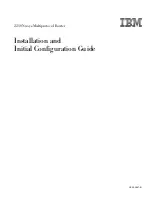
6.7.3.2
CIST General
MSTP-CIST configuration
The page consists of the following parts.
● The left-hand side of the page shows the configuration of the device.
● The central part shows the configuration of the root bridge that can be derived from the
spanning tree frames received by an device.
● The right-hand side shows the configuration of the regional root bridge that can be derived
from the MSTP frames received by an device. The displayed data is only visible if you have
enabled "Spanning Tree" on the "General" page and when "Protocol Compatibility" is set to
"MSTP". This also applies to the "Bridge Max Hop Count" parameter. If the device is a root
bridge, the information on the left and right matches.
Description
The page contains the following boxes:
● Bridge Priority / Root Priority
Which device becomes the root bridge is decided based on the bridge priority . The bridge
with the highest priority becomes the root bridge. The lower the value, the higher the priority.
If several devices in a network have the same priority, the device whose MAC address has
the lowest numeric value will become the root bridge. Both parameters, bridge priority and
MAC address, together form the bridge identifier. Since the root bridge manages all path
changes, it should be located as centrally as possible due to the delay of the frames. The
value for the bridge priority is a whole multiple of 4096 with a range of values from 0 to 61440.
● Bridge Address / Root Address
The bridge address shows the MAC address of the device and the root address shows the
MAC address of the root bridge.
● Root port
Shows the port over which the device communicates with the root bridge.
Configuring with Web Based Management
6.7 "Layer 2" menu
SCALANCE W1780/W1740 according to IEEE 802.11ac Web Based Management
270
Configuration Manual, 11/2019, C79000-G8976-C485-03
















































